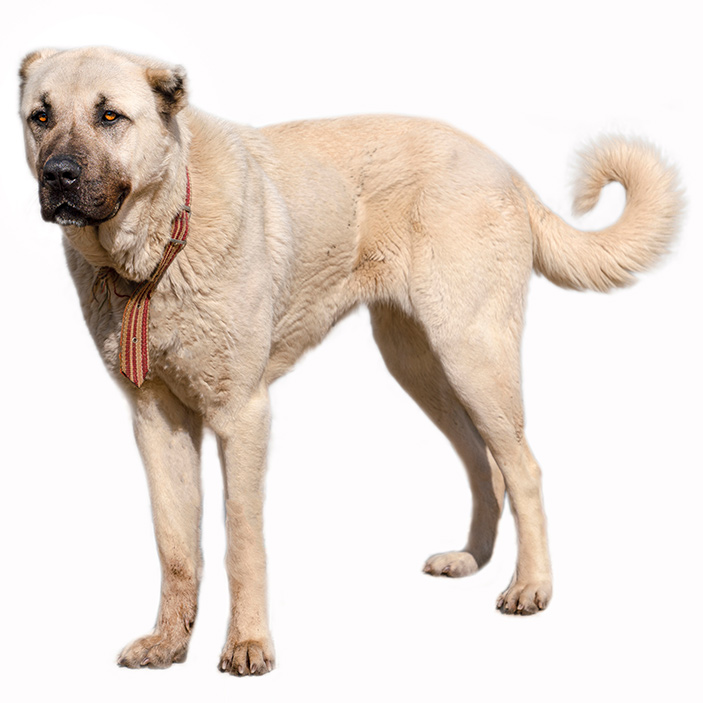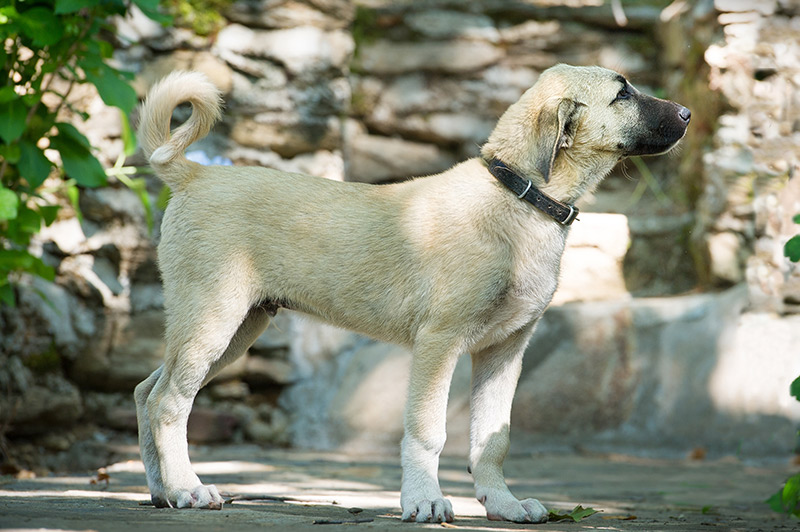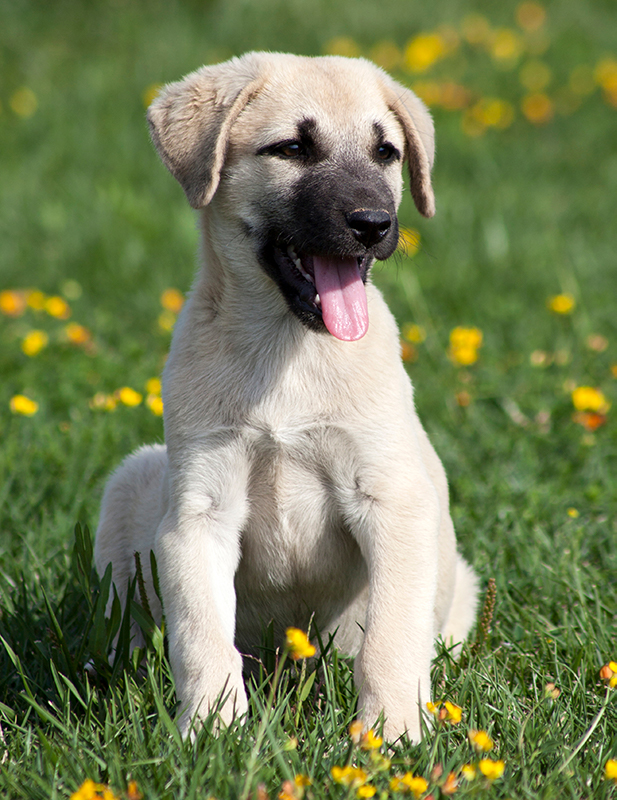Kangal
Loyal and protective guardian of livestock, familiar humans, children and family pets.
This breed has a lower probability of having health issues in its lifetime but is more prone to accidents and cruciate issues, and it is one of the more affordable breeds to insure.

Is this breed right for you?
Try our breed selector quiz to find out your best matching breed!
Insuring a Kangal?
Get our award-winning Nose-to-Tail Cover with up to $30k annual benefit limit, up to 90% of eligible vet bills back, and no sub-limits.
Get a quick quoteBreed Overview
The Kangal dog is a traditional and very old livestock guardian breed that originated in Sivas, a remote region of Turkey. Because of the geographical isolation of Sivas from other towns, the Kangal is a remarkably pure breed, with little crossbreeding in its history. This allows for an easy-to-identify breed standard which clearly describes the features that determine whether an animal is a purebred or not.
The Kangal’s physical appearance is characterised by a large and moderately wide head, floppy ears, dark muzzle and curled tail which is carried up and over the back; when viewed from the side, he has a very distinctive silhouette. He has a double coat that is moderately short and quite dense. His body colouration is an important breed characteristic, being a solid tan over most of the body, with a black muzzle and black-tinged ears. According to breed standards, brindle or white on the body or fluffy coat are unacceptable, although solid white markings on the toes or chest are acceptable.
This dog can certainly look intimidating, thanks to its gigantic size and powerful, muscular body. The male can grow up to 85 cm in height and weigh in at 65 kg, with females slightly smaller. Kangals are slightly longer than they are tall, and despite their massive size, they tend to be more agile and athletic than other giant breeds. But don’t be put off by outward appearances, as one look into their droopy brown eyes reveals that they are really gentle giants.
Having evolved as a working breed, the Kangal is best suited to an active working role in protecting livestock, such as sheep, cattle and goats, on farms or freeholdings. In fact, Kangals have gained a reputation for being exceptionally fierce and loyal, defending their flock against predators of all sizes including wolves and bears. They have an incredible instinct and ability to sense predators and will attack when they sense danger even without orders from their owners.
Despite their aggressiveness towards predators, by nature, Kangals are predictable and reliable, loyal and protective, making excellent partner and companion dogs that are gentle with livestock and children. However, owning a livestock guardian dog is not like owning a typical dog breed; therefore, Kangals are generally not recommended for inexperienced dog owners and those who have no experience in raising large dogs. This strong and powerful breed is best suited to responsible owners who are loving while providing the dog with an active role and firm leadership.
Being boisterous and ready to jump at any surprise attack, you will rarely see a Kangal lying around the house. Particularly if he is a companion animal, rather than a working dog, he needs plenty of physical exercise, including opportunities to patrol, roam and run in a large backyard, lengthy daily walks and playtime with his owner.
Additionally, he is a very intelligent dog who requires mental stimulation and needs to occupy himself with something to be content – ideally by utilising his guarding instincts to watch over his family. Keeping him cooped up at home for long periods will contribute to boredom, depression and anxiety, which can lead to excessive barking and destructive tendencies such as unwanted chewing, digging, and chasing and herding behaviours.

Personality and Temperament
There are two distinct sides to the personality and temperament of the Kangal. He is first and foremost a stock guardian dog and possesses a nature that reflects this – he is alert, fearless, territorial and defensive. These qualities, combined with his high intelligence, explain why he is so good at his job – he knows exactly when he needs to intimidate or attack to protect his flock and property.
The other side to the Kangal is his calm, gentle temperament and loyal, loving and protective nature. He is a trustworthy guardian of adults, children and family pets he considers part of his pack and, of course, livestock. The underlying reason for this seemingly dual personality is that historically, the original owners and breeders of the Kangal, the Turkish shepherds, ensured through selective breeding that their dogs would not display aggression towards familiar humans or livestock. This behaviour would not be tolerated, as the shepherds could not afford to lose their sheep; consequently, is not present in the breed.
The well-raised Kangal is loyal and devoted to its master and will obey any order he’s given. Their ability to aggressively defend their herd is innate to them and they require no training for this task. They make excellent watchdogs, being reserved with strangers but smart enough to know when to calm down, threaten an enemy, or attack a perceived predator. Usually, they will only bark or roar in the presence of unfriendly strangers, but they may attack any undeterred intruders. However, when trained to do so, Kangals are able to control their urge to attack predators, a remarkable trait for an animal with an immense protective drive and physical strength.
They are incredibly intelligent dogs that can adapt to their environment and are always alert for signs of danger. They develop a sense of independence from around 2 years of age, when they start to think on their own without the help of their owner. Therefore, it’s essential to establish your role as the leader of the pack while your Kangal is young. This is the best way to ensure that he will continue to follow your commands as he grows and will discourage undesirable behaviour.
Conventional dog training methods are generally not well-suited to livestock guardian dogs, and your training role with your Kangal may be mainly supervisory, rewarding him when he shows signs of calmness and even-temperedness and discouraging signs of aggression. Most importantly, he requires active and early socialisation as a young puppy to develop a calm temperament, by being exposed to unfamiliar sights, sounds, smells, people and animals.
Common Kangal Diseases & Conditions
Symptoms, diagnosis and treatment
Kangals are renowned for their robust health, and there are only a few conditions that they may be susceptible to.
- Hip Dysplasia: Hip dysplasia is a common skeletal condition in giant breeds and is one of the few congenital diseases known to affect the Kangal. It occurs when there is an abnormal development of the hip joint during the animal’s growth period, resulting in instability or a loose (lax) fit of the joint. This often lead to lameness, pain and osteoarthritis in the joint.
- Lipomas: These are fatty lumps or tumours that grow from the fat cells beneath the skin. Although mostly benign, over time they can grow to be extremely large, impeding movement and causing discomfort and irritation. Usually, multiple lipomas will develop in the animal.
- Entropion: Entropion is a hereditary condition in which the eyelid (usually the lower lid) folds inwards towards the eye. When this occurs, eyelashes and hair rub against the eye, causing irritation and discomfort of the cornea. Symptoms include squinting, holding the eye shut and tearing.
Not all conditions are covered by Pet Insurance. For details of Bow Wow Meow Pet Insurance cover, refer to the Product Disclosure Statement.

History
The Kangal is an ancient livestock guardian dog that originated in the district of Kangal in the Sivas region of Turkey during the 12th century. It is held in high esteem by the Turkish people and occupies a special cultural and historical status in Turkish society. Many consider the Kangal to be the national dog of Turkey; it has even appeared on Turkish coins and postage stamps.
It is believed that the Kangal is related to early mastiff-type dogs depicted in Assyrian art, and it has been categorised into the same family as the American Mastiff and Bullmastiff. However, the Kangal was selectively bred over hundreds of years, resulting in its distinctive size, strength, temperament and personality. The relative isolation of the Sivas-Kangal region has kept the Kangal Dog free of crossbreeding and has resulted in a natural breed of remarkable uniformity in appearance, disposition and behaviour.
Though Kangals were the prized breed of the landholders and chieftains of the area, including the Aga of Kangal, they were mostly bred by villagers and shepherds who needed guardians to protect their flocks of sheep and goats from wolves, bears and jackals. Wolves became this breed’s ultimate enemy and many farmers and shepherds place spiked collars on their dogs to protect them from a wolf’s bite.
Today, Turkish government and academic institutions operate breeding kennels where Kangal dogs are bred and pedigrees are carefully maintained. In fact, there are two government breeding centres in Sivas, the region where the breed originated. Turkey has banned the export of Kangals in an attempt to discourage unregulated breeding practices as well as the breeding of Kangals for dogfighting.
Before the exportation of Kangals was made illegal in Turkey, several were exported to other countries where breeding programs were established. The Kangal first appeared in the United Kingdom in 1965, with the first English Kangal litter being born in 1967, and in the United States in 1985, where it become popular for its ability to guard sheep, goats and cattle on large farms. In 1998, the breed received official recognition from the United Kennel Club.
The English breeders, who were committed to the original Turkish standard for their dogs, continued to breed exclusively along Kangal lines. With a few exceptions, most early imports to Australia trace their pedigree to these bloodlines. The Kangal Dog Association in Australia was formed in December 1996. The Standard for the Kangal Dog as accepted by the Australia National Kennel Council, was developed from the 1984 Turkish description of the breed that was prepared and signed by Turhan Kangal, a leading breeder of the time.

Kangal Facts!
- The Kangal used to be referred to as the ‘Anatolian Lion’ and is also known as the Kangal Shepherd, Kurdish Kangal, Turkish Kangal, and Kangal Çöban Köpeği.
- The Kangal has the strongest biteforce in the canine world and can generate a force of 743 pounds per square inch (PSI), compared to a Rottweiler with 328 PSI, or a human with 150 PSI.
- Although they are often confused, the Kangal is not the same as the Anatolian Shepherd; they are separate breeds although both originated in Turkey.
- According to legend, during the time of the Assyrians, the first Kangal was bred from a lion, ‘explaining’ why some consider the canine’s face to be slightly lion-like!
- Two or three Kangals are perfectly able to protect a flock of sheep numbering between 150 and 250.
- Kangals have helped to conserve cheetahs in Namibia, Southern Africa, where since 1994 the Cheetah Conservation Fund has given livestock farmers around 500 Kangal dogs to protect their herds from cheetah attacks, enabling farmers to stop hunting and killing cheetahs.
Free engraved pet ID tag on sign up3
Customer Satisfaction
21 day cooling off
Easy to use Pet Portal

GapOnly® in vet claims
FURTHER INFORMATION
All Things Dogs: https://www.allthingsdogs.com/kangal/
United Kennel Club: https://www.ukcdogs.com/kangal-dog
https://www.kangaldogamerica.com/
https://www.dogster.com/dog-breeds/kangal-dog
https://www.dogbreedinfo.com/kangaldog.htm
https://www.k9web.com/breeds/kangal/




